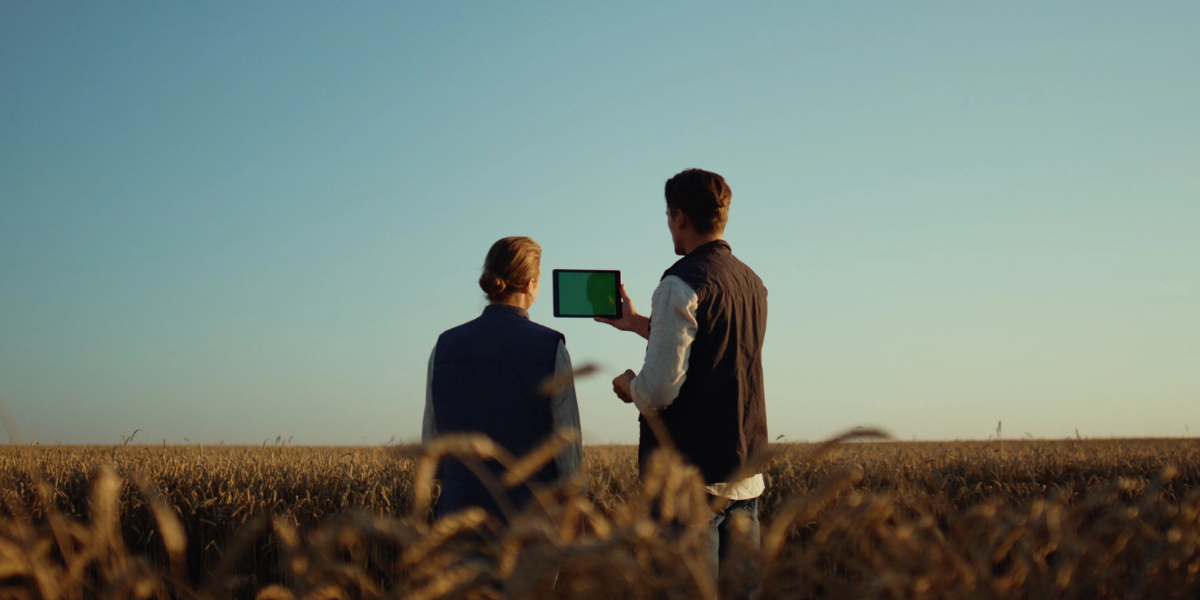New product development (NPD) in the food industry is a multifaceted process that transforms innovative ideas into market-ready products. In 2025, staying competitive necessitates embracing technological advancements, understanding evolving consumer preferences, and implementing efficient development strategies, solutions, and technologies. This article looks at the seven critical stages of NPD, highlighting contemporary trends and best practices to expedite time-to-market while ensuring product success.
The evolving landscape of food product development in 2025
The food industry in 2025 is characterised by rapid innovation, driven by sustainability, health consciousness, and technological integration. Key trends shaping NPD include:
- Sustainability and ethical sourcing: Consumers increasingly demand products that are environmentally friendly and ethically produced. This shift has led to the rise of plant-based alternatives and lab-grown meats, aiming to reduce the environmental footprint of traditional animal farming.
- Health and wellness: There's a growing interest in functional foods that offer health benefits beyond basic nutrition, such as immune-boosting ingredients and gut health enhancers.
- Technological advancements: The integration of artificial intelligence (AI), big data analytics, and automation is revolutionising NPD. Companies like Mondelez International utilise AI to streamline recipe development, reducing time-to-market significantly.
- Consumer engagement: Real-time feedback mechanisms and social media platforms enable companies to gather consumer insights rapidly, allowing for agile product development and marketing strategies.
The 7 stages of food product development
Developing a successful food product requires a structured, strategic approach to minimise risks and maximise market success. The seven key stages of food product development ensure that every step, from idea generation to post-launch review, is optimised for efficiency, quality, and consumer appeal. Here’s how food businesses can navigate each stage to bring innovative products to market faster in 2025.
1. Idea generation
Innovative product ideas stem from comprehensive market research, consumer insights, and emerging food trends. Utilising AI and big data, companies can predict high-potential concepts by analysing vast datasets, including social media trends and purchasing behaviours. For instance, AI tools can identify flavour combinations gaining popularity, aiding in the creation of products that resonate with target audiences.
2. Project scopingDefining clear project goals and assessing feasibility are crucial before proceeding. Tools such as SWOT analysis and competitive benchmarking help identify strengths, weaknesses, opportunities, and threats, ensuring the project aligns with market needs and company capabilities. This stage sets the foundation for resource allocation and timeline planning.
3. Product developmentThis phase involves formulation, ingredient selection, and prototype creation. Collaboration among food scientists, chefs, and R&D teams is essential to optimise taste, texture, and nutritional profile. Technologies like 3D food printing enable rapid prototyping, allowing for precise control over product design and consistency. For example, 3D printing has been used to create plant-based steaks with textures mimicking real meat.
4. Product verification testing
Ensuring product safety and quality involves lab testing, shelf-life analysis, and compliance with food safety standards. AI-driven quality control systems enhance testing accuracy by detecting anomalies and predicting potential issues. For instance, AI can monitor equipment performance to prevent failures that could compromise product quality.
5. Product validation testing
Consumer testing, focus groups, and pilot launches provide valuable feedback to refine the product before full-scale release. Social listening tools and real-time feedback platforms enable companies to gauge consumer sentiment and make data-driven adjustments, ensuring the product meets market expectations.
6. Product launch
Effective go-to-market strategies encompass retail partnerships, direct-to-consumer (D2C) channels, and robust marketing campaigns. Leveraging influencers and e-commerce platforms amplifies reach and engagement. For example, AI-driven dynamic pricing models can optimise pricing strategies based on real-time market data, enhancing competitiveness.
7. Post-launch review
Monitoring product performance and analysing consumer feedback are vital for continuous improvement. Data-driven decision-making allows companies to iterate on existing products and inform future NPD efforts, fostering a culture of innovation and responsiveness to market dynamics.
Accelerating food product development with technology
In 2025, technology is revolutionising food product development (NPD) by enhancing efficiency, reducing costs, and significantly shortening time-to-market. Embracing automation, artificial intelligence (AI), cloud-based solutions, and digital agriculture is no longer optional—it’s essential for food manufacturers looking to stay ahead in a competitive landscape. Here’s how technology is accelerating the NPD process:
Automation and AI: boosting efficiency and accuracy
Automation and AI are transforming food product development by reducing manual workload, human error, and production inefficiencies. AI-driven analytics can process vast datasets to identify market trends, improve cost-efficiency, predict consumer preferences, and recommend high-potential product ideas.
Additionally, AI-powered predictive maintenance minimises costly downtime by analysing equipment performance in real-time and alerting teams to potential failures before they occur. This ensures continuous production, consistent quality, and lower operational costs. In quality control, machine learning algorithms can detect defects in ingredients and final products faster and more accurately than human inspectors, improving food safety and regulatory compliance.
Cloud-based NPD management platforms: real-time collaboration and scalability
Cloud-based platforms have transformed NPD by enabling seamless collaboration across R&D, production, marketing, and supply chain teams—even when working remotely. These platforms centralise all NPD data, including formulation records, compliance documentation, test results, and consumer insights, ensuring teams access the latest information in real-time.
Other key benefits include:
- Faster approvals and decision-making, reducing bottlenecks in the development process.
- Improved traceability, making it easier to track ingredient sources and ensure sustainability goals are met.
- Scalability, allowing food manufacturers to manage multiple product lines efficiently.
Digital agriculture - enhancing ingredient quality and supply chain efficiency
The quality of raw materials directly impacts the success of a food product. Digital agriculture leverages IoT sensors, AI-driven monitoring, and satellite imaging to optimise farming practices, ingredient sourcing, and supply chain efficiency.
Technologies like precision farming allow growers to monitor soil conditions, weather patterns, and crop health in real-time, ensuring consistent, high-quality ingredients for food production. Blockchain-based traceability systems provide transparency from farm to factory, helping food manufacturers meet sustainability and ethical sourcing requirements while boosting consumer trust.
By integrating these advanced technologies, food businesses can develop high-quality, compliant, and market-ready products faster than ever before.
The future of food NPD: leveraging technology, speed, and sustainability
A structured approach to NPD, enriched with technological advancements and consumer-centric strategies, is essential for success in the 2025 food industry landscape. By embracing sustainability, leveraging AI and automation, and maintaining agility in responding to consumer trends, food businesses can efficiently bring innovative products to market. Exploring comprehensive NPD software solutions can further enhance these capabilities, positioning companies for sustained growth and competitiveness.
Looking to streamline your new product development (NPD) process and bring innovative food products to market faster? Foods Connected offers cutting-edge NPD management solutions that help food manufacturers, processors, and product developers optimise workflows, ensure compliance, and reduce time-to-market with data-driven insights.
Natalie Thorpe
A graduate of Letterkenny Institute of Technology, Natalie studied Visual Communication and Graphic Design. When she's not creating up new designs for company materials and branding, writing, compiling marketing plans or implementing new UX strategies, you'll find her roaming a deserted beach in search of her disappearing dog, or soaking up different cultures on her globetrotting adventures!
Stay up to date
Stay up to date
Browse Posts
- December 2025
- November 2025
- October 2025
- September 2025
- August 2025
- July 2025
- June 2025
- May 2025
- April 2025
- March 2025
- February 2025
- January 2025
- December 2024
- November 2024
- October 2024
- September 2024
- August 2024
- July 2024
- June 2024
- May 2024
- April 2024
- March 2024
- February 2024
- January 2024
- December 2023
- November 2023
- October 2023
- September 2023
- August 2023
- July 2023
- June 2023
- May 2023
- April 2023
- March 2023
- December 2022
- November 2022
- October 2022
- September 2022
- August 2022
- July 2022
- June 2022
- May 2022
- April 2022
- March 2022
- February 2022
- January 2022
- December 2021
- November 2021
- October 2021
- August 2021
/Blog%20Headers/shutterstock_1927957907%20(1).jpg)

/Blog%20Headers/shutterstock_1845178195%20(2).jpg)
/Blog%20Headers/shutterstock_2473376713.jpg)
/Blog%20Headers/shutterstock_2133827717%20(1).jpg)
/Blog%20Headers/shutterstock_2247276303.jpg)
.png)
.png)



/Blog%20Headers/shutterstock_2329797865.jpg)
/Blog%20Headers/Blog%20header_SEO_How%20AI%20detects%20food%20fraud.jpg)
/Blog%20Headers/New%20Calorie%20Labelling%20Regulations%20in%20England%20What%20Will%20it%20Mean%20for%20your%20Business.jpg)
/Blog%20Headers/shutterstock_2262344895.jpg)
/Blog%20Headers/freshpak%20header.jpg)
.jpg)
.png)
/Blog%20Headers/FSMA%202024%20update%20Blog%20header.jpg)
/Blog%20Headers/shutterstock_1794185881.jpg)
